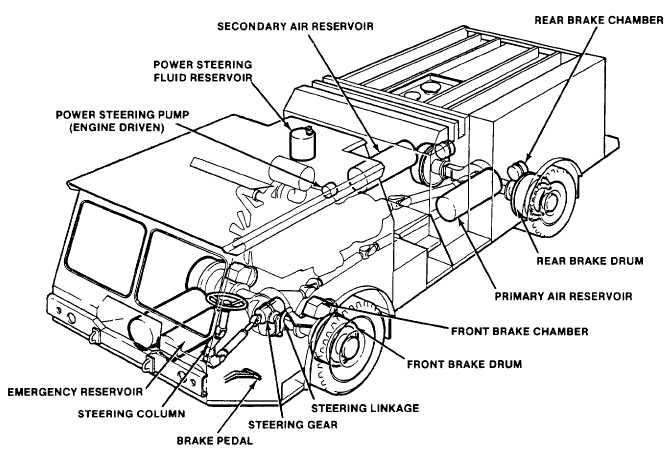You know that when you turn the steering wheel in your car, the
wheels turn. Cause and effect, right? But a lot of interesting stuff
goes on between the steering wheel and the tires to make this happen.
In this article, we'll see how the two most common types of car steering systems work: rack-and-pinion and recirculating-ball steering. Then we'll examine power steering and find out about some interesting future developments in steering systems, driven mostly by the need to increase the fuel efficiency of cars.
In this article, we'll see how the two most common types of car steering systems work: rack-and-pinion and recirculating-ball steering. Then we'll examine power steering and find out about some interesting future developments in steering systems, driven mostly by the need to increase the fuel efficiency of cars.
Introduction
Steering is the term applied to the collection of components, linkages, etc. which will allow a vessel (ship, boat) or vehicle to follow the desired course.Wheeled vehicle steering
The basic aim of steering is to ensure that the wheels are pointing in the desired directions. This is typically achieved by a series of linkages, rods, pivots and gears. One of the fundamental concepts is that of caster angle - each wheel is steered with a pivot point ahead of the wheel; this makes the steering tend to be self-centering towards the direction of travel.Rack and pinion
The rack and pinion design has the advantages of a large degree of feedback and direct steering "feel". A disadvantage is that it is not adjustable, so that when it does wear and develop lash, the only cure is replacement.
The recirculating ball version of this apparatus reduces the
considerable friction by placing large ball bearings between the teeth
of the worm and those of the screw; at either end of the apparatus the
balls exit from between the two pieces into a channel internal to the
box which connects them with the other end of the apparatus, thus they
are "recirculated".
The worm and sector was an older design, used for example in Willys and Chrysler vehicles, and the Ford Falcon (1960s).
Power steering
Power steering helps the driver of a vehicle to steer by directing some
of the its power to assist in swivelling the steered roadwheels about
their steering axes. As vehicles have become heavier and switched to front wheel drive,
particularly using negative offset geometry, along with increases in
tire width and diameter, the effort needed to turn the wheels about
their steering axis has increased, often to the point where major
physical exertion would be needed were it not for power assistance.
Four-wheel steering
Four-wheel steering (or all-wheel steering) is a system employed by some
vehicles to improve steering response, increase vehicle stability while
maneuvering at high speed, or to decrease turning radius at low speed.
Crab steering
Crab steering is a special type of active four-wheel steering. It operates by steering all wheels in the same direction and at the same angle. Crab steering is used when the vehicle needs to proceed in a straight line but under an angle (i.e. when moving loads with a reach truck, or during filming with a camera dolly), or when the rear wheels may not follow the front wheel tracks.Passive rear wheel steering
Many modern vehicles offer a form of passive rear steering to counteract normal vehicle tendencies. On many vehicles, when cornering, the rear wheels tend to steer slightly to the outside of a turn, which can reduce stability. The passive steering system uses the lateral forces generated in a turn (through suspension geometry) and the bushings to correct this tendency and steer the wheels slightly to the inside of the corner. This improves the stability of the car, through the turn.Rear wheel steering
ear wheel steering tends to be unstable because in turns the steering
geometry changes hence decreasing the turn radius (oversteer), rather
than increase it (understeer). A rear wheel steered automobile exhibits non-minimum phase behavior.








Nice Post. Thanks for Sharing
ReplyDeletesuspension parts manufacturers in India
Best Automobile Part Manufacturers in India
Shock Absorber Manufacturers in India
Brake Shoe Manufacturers in India
Brake Manufacturers in India
Car Suspension Parts Manufacturers in India
Universal Joint Cross Manufacturers
Bearing Manufacturers
Brake Shoe Manufacturers